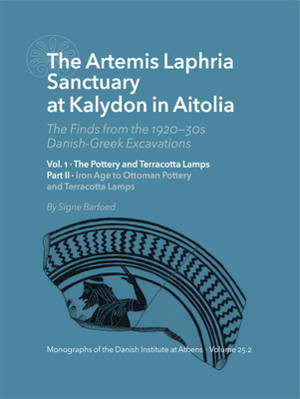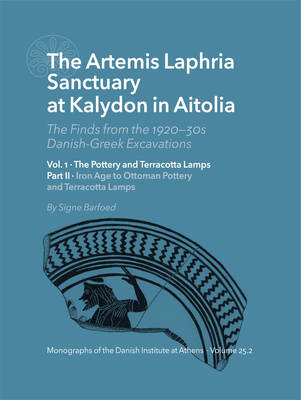
- Afhalen na 1 uur in een winkel met voorraad
- Gratis thuislevering in België vanaf € 30
- Ruim aanbod met 7 miljoen producten
- Afhalen na 1 uur in een winkel met voorraad
- Gratis thuislevering in België vanaf € 30
- Ruim aanbod met 7 miljoen producten
Zoeken
The Artemis Laphria Sanctuary at Kalydon in Aitolia. the Finds from the 1920s--30s Danishgreek Excavations - Vol. 1-2
The Pottery and Terracotta Lamps
Signe Barfoed
€ 181,45
+ 362 punten
Omschrijving
The Artemis Laphria Sanctuary at Kalydon in Aitolia. The Finds from the 1920s--30s DanishGreek Excavations - Vol. 1: The Pottery and Terracotta Lamps offers the first comprehensive analysis of the ceramic material recovered from the sanctuary of Artemis Laphria at Kalydon, Aitolia, excavated in the 1920s and 1930s by Frederik Poulsen, Konstantinos Rhomaios, and Ejnar Dyggve. While the sanctuary's architecture and topography were published in 1948, the extensive ceramic assemblages, dating from the Prehistoric to Late Antique periods, remain largely unpublished until now. This volume constitutes a significant contribution to the study of archaeology in the region of Aitolia, ancient Greek religion, and ceramic production and consumption. It presents notable Mycenaean material alongside distinctive locally produced wares -- including a rhyton with an exceptional figured scene -- and imported pottery from Corinth, Attica, and Elis, highlighting Kalydon's long-standing interregional connectivity. In addition to detailed typological and morphological analyses, the volume offers a critical reassessment of the excavation history as well as a contextualised interpretation of the assemblage in relation to the sanctuary's overall diachronic development.
Specificaties
Betrokkenen
- Auteur(s):
- Uitgeverij:
Inhoud
- Aantal bladzijden:
- 827
- Taal:
- Engels
- Reeks:
- Reeksnummer:
- nr. 25
Eigenschappen
- Productcode (EAN):
- 9788775973675
- Verschijningsdatum:
- 15/01/2026
- Uitvoering:
- Hardcover
- Formaat:
- Genaaid
- Afmetingen:
- 210 mm x 275 mm
- Gewicht:
- 3019 g

Alleen bij Standaard Boekhandel
+ 362 punten op je klantenkaart van Standaard Boekhandel
Beoordelingen
We publiceren alleen reviews die voldoen aan de voorwaarden voor reviews. Bekijk onze voorwaarden voor reviews.








